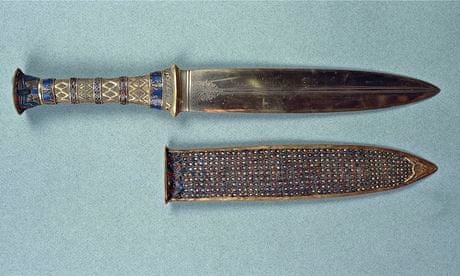Five thousand three hundred years ago, a man was buried in a sandy grave in the Gerzeh cemetery, 70km south of modern Cairo, Egypt. Little is known about him, but it is clear that he was important, because of the valuable grave-goods he was buried with – an ivory pot, a copper harpoon, a stone palette to grind cosmetics, and bead jewellery made from gold and iron. But the Egyptian iron age didn't start until 600BC, so what are these iron beads doing here?
Although rare, a number of elite people appear to have been buried with pre-Iron Age artefacts, including King Tutankhamun in 1327BC. Wrapped inside his mummy bandages was a dagger with a sharp iron blade and an iron amulet on a gold bracelet. Were the ancient Egyptians working iron far earlier than we thought? Did it arrive in Egypt via trade or, as the earliest archaeologists suggested, did the iron come from meteorites?
Using electron microscopy to scrutinise the surface and micro x-ray computer tomography to examine inside the Gerzeh beads, Diane Johnson from the Open University and Joyce Tyldesley from the University of Manchester have shown that for the beads at least, the structure and nickel-rich chemistry of the iron suggests a meteoric origin. An iron meteorite impact crater, discovered in southern Egypt in 2008 and dated to within the last 5000 years, could have been the source of some early iron, which was perhaps considered special because it 'fell from the sky', the home of the gods.

Comments (…)
Sign in or create your Guardian account to join the discussion